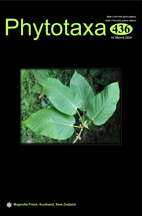Abstract
The aims of this study were to describe and illustrate cypselae of 15 Mexican species of Mutisieae from observations using optical and scanning electron microscopy. The cypselae are heteromorphic with pilose, sericeous or glandular indumentum. The primary sculpture of the surface has two microstructural patterns: reticulate and plicate. The secondary sculpture is striate in 13 taxa, but in two species, Chaptalia estribensis and C. mexicana, differences were found in the secondary sculpture of the external and internal cypselae. The most distinctive anatomical trait is in the epicarp, which has rectangular or square-shaped cells that have a convex periclinal wall in most species of Chaptalia. The mesocarp has vascular bundles with fibers in all species of Chaptalia, but fibers are absent in Adenocaulon, Gerbera and Leibnitzia. In addition, the cells of the mesocarp inner layer have either thick walls or only an anticlinal wall in nine species of Chaptalia. The micromorphological characteristics of the primary or secondary sculpture of the surface, the type of trichomes and the variation they present have taxonomical value for recognizing closely-related taxa, whereas anatomical traits of the mesocarp distinguish Adenocaulon, Gerbera and Leibnitzia from most Chaptalia species.

